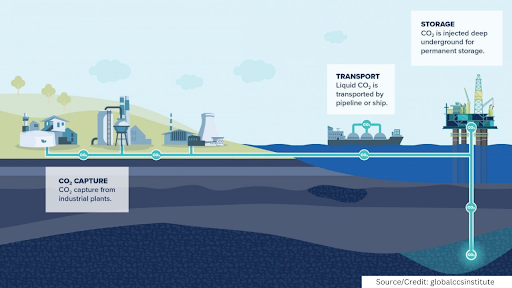
08 Sep Net Zero: The Ultimate Climate Change Solution Explained!
Since the United Nations’ adoption of the “Environmental Perspective to the Year 2000 and Beyond — a Framework to Guide” in 1987, global awareness of environmental issues has taken a significant turn. Presently, the world is more conscious of the peril human activities pose to the environment and, consequently, to humanity itself. In response, combating global warming has become an urgent priority. One approach that has gained considerable attention and momentum is the concept of “Net Zero.”
While Net-Zero has become a household name in the UK, it is without doubt one of the most controversial, with many dividing opinions. Consequently, then, only a few people truly understand what it means, the science behind it, and the benefit to humanity.
Net-Zero simply, according to the UN, simply means “cutting greenhouse gas emissions to as close to zero as possible, with any remaining emissions re-absorbed from the atmosphere, by oceans and forests, for instance.”
To help you better grasp the meaning of this revolutionary concept, this article will present you with a concise yet comprehensive overview of the Net Zero concept, its importance, and the pivotal role it plays in securing a sustainable future for our planet.
A Brief Overview: What are the Facts?
The evidence indicates a consistent rise in global temperatures. A recent report from the World Meteorological Organisation confirmed the last eight years as the warmest on record. As of 2022, the average global temperature was approximately 1.15 [1.02 to 1.27] °C higher than the pre-industrial levels (1850-1900). Although one degree may not seem significant, the truth is that this gradual warming is already showing adverse effects. Furthermore, if current trends persist, the situation is expected to worsen, with forecasts predicting global temperatures to rise by as much as 2 and 9.7°F (1.1 to 5.4°C) by 2100.
The scientific evidence makes it evident that to prevent the most severe consequences of climate change and ensure a habitable planet, it is crucial to limit the increase in global temperatures to 1.5°C above pre-industrial levels. With the current global temperate and its continual increase, it becomes imperative for global stakeholders to pull efforts towards saving the planet for ourselves and the future generation. Efforts to do so were substantiated at the 2015 N Climate Change Conference (COP21), otherwise known as the Paris Agreement, which is a legally binding international treaty on climate change. The Paris Agreement is simply a call to keep global warming below 1.5°C, with a strategy of reducing global greenhouse emissions by 45% by 2030 and achieving net zero emissions by 2050.
Within a larger scope, Net-Zero revolves around not only reducing emissions but also actively extracting carbon dioxide from the atmosphere. Various methods, such as carbon capture and storage (CCS), reforestation, and afforestation, can be employed to achieve this goal. By carefully balancing greenhouse gas emissions with their removal from the atmosphere, this ambitious and groundbreaking approach offers the potential to mitigate climate change effectively.
Key Strategies to Achieve Net Zero
Renewable Energy Transition
The energy sector alone is responsible for approximately three-quarters of greenhouse gas emissions, therefore, it plays a pivotal role in mitigating the severe impacts of climate change. As such, transitioning away from environmentally harmful coal, gas, and oil-fired power and from fossil fuels in general to embracing renewable energy sources such as solar, wind, hydro, and geothermal power is paramount. This shift reduces carbon emissions and dependence on finite resources while fostering a sustainable energy ecosystem.

The fact, however, is that this transiting stands as one of the most formidable challenges humanity has encountered. This is because achieving a Net-zero will necessitate nothing short of a complete overhaul in our methods of production, consumption, and transportation, and considering the fact that the world has become dependent on fossil fuel since the industrial revolution, such a transition will come with a lot of cost.
However, hope is not lost. At present, over 70 countries, including major polluters like China, the United States, and the European Union, have committed to achieving a net-zero target, accounting for approximately 76% of global emissions. Additionally, more than 3,000 businesses and financial institutions are collaborating with the Science-Based Targets Initiative to align their emission reduction strategies with climate science. This collective effort signals a growing global commitment to combat climate change and transition towards a sustainable, low-carbon future.
Nature Based Projects
Nature-based projects have become a powerful tool in achieving net-zero goals, utilising natural ecosystems to capture and store carbon. These initiatives include reforestation, afforestation, coastal wetland restoration, and peatland conservation, all playing a crucial role in mitigating climate change and preserving biodiversity. According to the World Bank, nature-based solutions can provide 37% of the necessary mitigation to reach Paris Agreement targets by 2030. For example, trees absorb carbon dioxide through photosynthesis and store it in biomass and soil. Forests, coastal wetlands, and peatlands serve as carbon sinks, effectively capturing substantial amounts of carbon. By utilising these inherent natural processes, nature-based initiatives play a significant role in decreasing greenhouse gas emissions. Overall, nature-based solutions offer multiple advantages, including co-benefits beyond carbon sequestration, such as biodiversity enhancement and community well-being, making them a more sustainable and holistic approach to climate action.
Carbon Capture and Storage (CCS)
The IPCC emphasised that achieving the goals of the Paris Agreement and limiting temperature increases to 1.5°C (2.7°F) requires more than just increasing emission reduction efforts; it also necessitates the implementation of technologies to remove carbon from the atmosphere. Carbon capture and storage (CCS) is one such technology that can achieve that goal.
Carbon capture and storage (CCS) is a three-step process that utilises technology to capture carbon dioxide (CO2) emissions from industrial activities such as steel and cement production or from the burning of fossil fuels in power generation (step one). The captured carbon is then transported either via ships or pipelines (step two) and stored deep underground in geological formations (step three). CCS serves the dual purpose of reducing greenhouse gas emissions and providing negative emissions, thus playing a significant role in the transition towards a net-zero society.
Conclusion
To summarise, Net Zero is a powerful strategy for combating the current global climate crises and ensuring humanity’s survival. We owe it to ourselves and our children to live in a safe environment rather than destroy their world for our own immediate gratification. It is critical to act quickly, and with unwavering commitment and collaboration from governments, industries, and individuals, we can make Net Zero a tangible reality, ensuring a sustainable and prosperous future for our planet.

No Comments